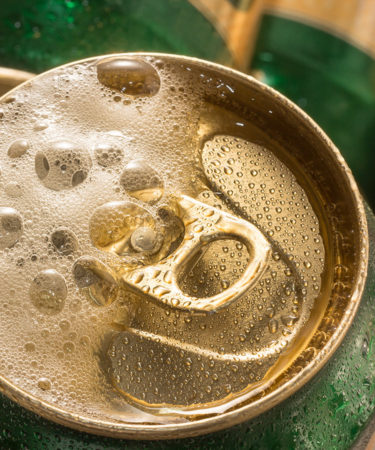You know when you grab a can of beer out of the carton, and it’s been laying on its side? Your first instinct is to let it sit upright for a few moments before opening it, for fear that it might explode. You may even try tapping the top of the can, in the hopes that the gesture will speed up the process.
But according to Snopes.com, it’s a myth to think this could help.
An unopened beer can contains almost no bubbles, as the high pressure inside of the container forces the carbon dioxide to stay within the liquid surrounding it. Popping open the can allows the pressure to subside, as little gas bubbles form and rise to the top, releasing carbon dioxide into the atmosphere.
A beer can that’s been shaken or agitated contains tons of those tiny little bubbles, as all that movement frees the carbonation from the liquid. The carbon dioxide is now roused and ready to party.
Enter the tapping method, which is based on an idea that tapping loosens collected bubbles from deep inside the can, and causes them to rise to the top. That way, by the time the can is opened they’ve already released their gasses and no explosion would ensue.
But as it happens tapping does nothing to prematurely release the carbon dioxide that causes the explosion. Nor does it keep the carbon dioxide inside the can, or cause the bubbles to seek refuge inside the liquid. And while it seems like the foamy outburst is lessened with tapping, in fact the lessening is more likely related to the extra time that the tapping process provides for the carbon dioxide to be reabsorbed into the beer.
So eager as you may be to get to that sweet golden liquid, patience is the only way around this one.
